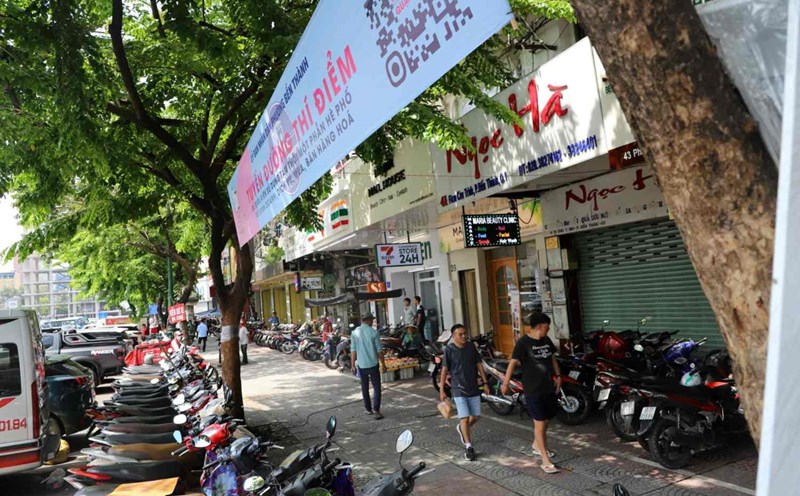According to the report of the Department of Construction sent to the People's Committee of Ho Chi Minh City on the implementation of temporary management and use of part of the roadway and sidewalk in Ho Chi Minh City, from May 2024 to July 2025, the total fee collected will reach about 8.5 billion VND.
12 months of earning 8.5 billion VND, a figure too low compared to expectations.
Because previously, the Ho Chi Minh City Department of Transport (now the Department of Transport) calculated that with more than 600 roads over 9m wide, if exploited for lease as parking lots, it would bring about 550 billion VND/year.
At the same time, 1,143 roads have sidewalks 3m or more wide, if rented for business purposes, it can earn more than 971 billion VND/year.
The total of these two items is 1,693 billion VND, if there are errors and differences, at least 1,500 billion VND will be collected.
However, reality shows that after more than 1 year of piloting, the revenue is too small, not commensurate with a major project of a breakthrough in managing and trading sidewalks and roads in Ho Chi Minh City.
Not to mention, it is necessary to clarify whether the 8.5 billion VND revenue has been deducted from salary and management costs, if the expenses have not been deducted, then consider the heavy loss.
Through the results of the pilot activity of collecting sidewalk and road fees in 6 districts for more than a year, it shows that it needs to be rectifyed to implement better and more effectively.
Otherwise, it may fall into a state of failure like the car parking fee collection activities in the past.
The Ho Chi Minh City transport sector calculates that with the number of parking locations on some routes, it will earn about 6.7 billion VND per month (about 80 billion VND per year).
But in reality, the hourly parking fee collected on 20 routes from December 2020 to the end of October 2024 was 22.04 billion VND. However, the expenditure accounts for VND24.32 billion, accounting for a loss of VND2.28 billion.
If compared to the calculation of the transport sector of collecting about 80 billion VND per year, in 4 years collecting 320 billion VND, in fact, collecting only more than 22 billion VND.
Thus, VND 298 billion has been lost, a loss that is very difficult to compensate. Is it due to incorrect calculations or poor business management?
Returning to the activity of collecting sidewalk and road tolls, the pilot phase may still be confusing, but the weak situation cannot be prolonged.
It is weak to have many illegal parking lots operate.
Some are for rent, while others are left to businesses to freely encroach on sidewalks and roads, which is weak.
There is no technology application as a tool for transparency in fee collection, management is weak.












